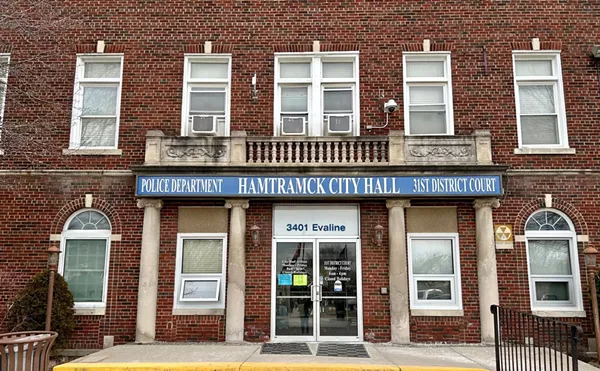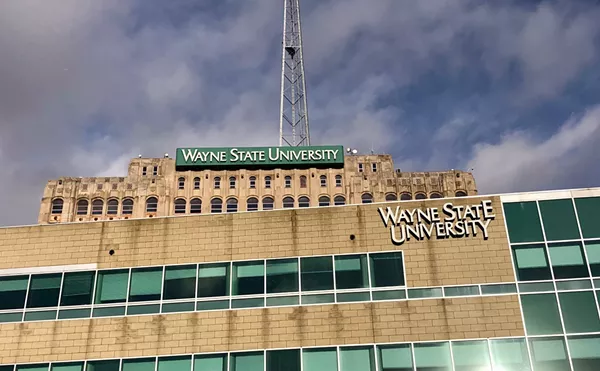
Audio By Carbonatix
[
{
"name": "GPT - Leaderboard - Inline - Content",
"component": "35519556",
"insertPoint": "5th",
"startingPoint": "3",
"requiredCountToDisplay": "3",
"maxInsertions": 100,
"adList": [
{
"adPreset": "LeaderboardInline"
}
]
}
]
Everybody knows that Detroit exploded in a fury of looting and burning and, later, killing in July 1967. Everyone also pretty much agrees things haven't been the same since. And that's about as far as agreement about what happened goes. Lots of talking heads will be trying to explain it this week and next, in broadcast media specials and analyses in the newspapers.
Most Detroiters — most Americans — were not alive when the riot happened. I was alive, by the way, and I was here, a politically interested and aware teenager. I had no special experiences worth relating.
Except that I did live through what everyone at the time called, simply, "the riot," and have read volumes about it and what it did to us, ever since.
And I know the truth is that we have never gotten over it.
The truth is also that much of Detroit is mostly a not-so-magnificent ruin now. There is a bustling little stadium and entertainment district. You can find a few very fine restaurants, amid tens of thousands of abandoned buildings.
Yes, and in recent years have come high-rises and elegant lofts for the yuppies and buppies and well-off DINKs (double income, no kids). There are a few neighborhoods, such as Sherwood Forest and Palmer Woods, with mostly still-lovely homes where the middle-class and the politicians live.
The residents struggle valiantly against the crime and mostly bypass the impoverished and dreadful school system, and try to pretend life is normal. Yet it is not, not in the sense that life is normal in Southfield or South Lyon, and that, too, has a direct connection to the steamy summer night on July 22-23, 1967, when the police raided a blind pig and all hell gradually broke loose.
Detroit was a different place then, a city in transition, but a big, thriving, segregated yet multi-racial city that still believed in progress. Yes, it was losing people to the suburbs — but there were nearly twice as many people as today.
Though the black population was steadily increasing, nearly two-thirds of Detroiters were still white. Virtually all the money and power was white.
There were no black reporters at either of the big newspapers. Blacks couldn't get lots of good jobs. They were locked out of apprentice programs for the best craft unions. Only one of nine councilmen was black, only two of seven school board members, and very, very few policemen.
Far more than today, whites had no idea what went on in the black world. They thought progress was being made, that things were gradually getting better. That was easy for them to believe, since they didn't know many blacks, and a few high-profile tokens were getting jobs.
The young mayor, Jerome P. Cavanagh, had been elected with heavy black support. The governor, George Romney, was for civil rights. The president, Lyndon B. Johnson, had told the nation, "We shall overcome."
Many white Detroiters thought things were actually starting to go the blacks' way. Too much so for some whites, including one of my aunts, an ignorant woman who told us, "You give 'em an inch and they'll take a mile."
Then came the riot.
The sainted Grace Boggs, perhaps the most profound and original thinker to ever spend half a century in Detroit, insists on calling it a "rebellion," in that it was a justified, if unfocused, uprising against intolerable conditions.
What she says holds a vast amount of truth. But nobody was calling it a rebellion while it was happening, or for some time afterward, and for that reason I am calling it a "riot" here — the word in universal use at the time.
Grace and her husband Jimmy Boggs could sometimes see around corners. But instead, I want to turn to the man whose analysis of the riot is the best summary I have ever seen.
His name was Coleman Alexander Young. You may have heard of him. My guess is that if you asked older whites in the suburbs why they left Detroit, even more would say "Coleman Young" than would say "the riot."
Young, who became mayor six years after the riot, had a huge chip on his shoulder. If you read his eye-opening and fascinating autobiography, Hard Stuff (Viking, 1994), you'll see how it got there. Had it been me, I would either have had my spirit broken, my body killed, or both. Few whites had any idea of how brilliant and nuanced he really was, especially before he got old and sick. Frankly, I don't think most blacks did, either. He was a 49-year-old state senator when the riot happened. Here's what he had to say about it:
"I choose to think of it as an explosion — a chemical reaction to the prevailing conditions. The flammable element was police brutality ...
"The explosion of 1967, unlike the one (in 1943) was not a race riot. To be sure, most of the participants were black, and there were unmistakable racial implications ... (but) a cameraman took pictures of the looting of an A&P store on Trumbull, and there was racial unity up and down the goddamned aisles.
"Blacks and whites were helping each other carry out cases of canned goods in complete harmony ... it could be argued that the rebellion, specifically the pillaging part of it, was as much about consumerism as about race, a revolt of underprivileged, overcrowded, hot and irritable citizens who were fed up ... and finally had a chance to be the takers."
Eventually, Coleman Young believed, the police and the ham-handed National Guard troops made it racial: "If the insurrection of Detroit in 1967 must be called a riot, let it be recorded as a police riot. This is not to say that the citizens of Detroit were justified in destroying their own community, or that the police should bear all the blame, only that there was a principal object of the rebels' vengeance, and ... it was the white man in the blue uniform."
What did it all mean? Here the future mayor is at his most eloquent: "The heaviest casualty was the city. The riot put Detroit on the fast track to economic desolation, mugging the city and making off with incalculable value in jobs, earnings taxes, corporate taxes, jobs, dollars, and plain damn money.
"The money was carried out in the pockets of the businesses and the white people who fled as fast as they could." Yes, they surely did.
Six years later, "on Election Day, I became the goddamn mayor of Detroit," Coleman Young wrote. He knew that, ironically, the riot had a lot to do with his victory. And he knew "that I was taking over the administration of Detroit because the white people didn't want the damn thing anymore. They were getting the hell out, more than happy to turn over their troubles to some black sucker like me."
Today, a third of a century later, Coleman's been dead a decade, and even those blacks who can leave have long since been scrambling for the exits.
Barely 875,000 people remain in the city, the vast majority black, a huge number of them poor. Whites are currently moving out absurd distances with impossible commutes to avoid fixing the real problem.
Someday, that will have to stop. We will have to work together to clean up the nest we've fouled and the messes we've made. Then, and only then, maybe we'll be able to deal with the legacy of those long-ago days in July.
Jack Lessenberry opines weekly for Metro Times. Contact him at letters@metrotimes.com




